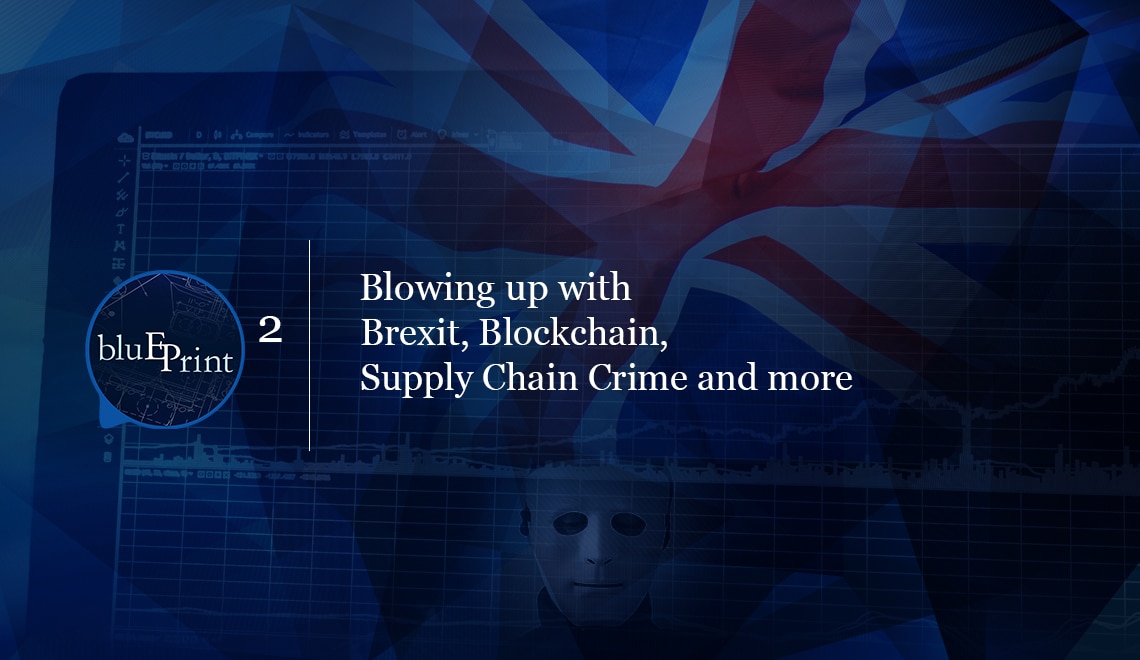
As United Kingdom exits the European Union end of March, where will your supply chain stand? UK will be free to set its own tariff rates within a year, and businesses may apply for tariff reductions. Trade with other countries can become easier, and your business could benefit from selling more products to the UK.
Brexit Blowing Through Supply Chains
Currently, the fall in the pound means UK goods are cheaper to buy from other countries. Despite UK’s full time employment rate growth, the uncertainty of negotiations have caused business investments to stagnate, with barely any growth. If your supply chain is involved with the UK or may be in the future, check out these developments:
- Lower value goods will be hit the largest by tariffs– Fortunately, almost all spirits, beers, spices and oil seeds will not be affected.
- However, most processed foods and drink is likely to hit much harder tariffs than raw materials.
- EU companies withholding from UK firms – Naturally, British companies being withheld business from EU will make them hungrier for trade with other countries.
- Preventing border delays for insulin – Europe’s pharma industry is preparing for life and death, with the world’s biggest insulin maker reserving space on airplanes to boost stockpiles.
Here are more resources on accommodating for Brexit’s effect on your supply chain:
Brexit (Keeping your goods moving) – EY
Is Your Supply Chain Ready for Brexit – SCMR
Brexit and the Supply Chain – Lexology
How to prepare if the UK leaves the EU with no deal – Gov UK
Tech Vault – Lessons from AI Developments in Supply Chain

With machine learning, robots are providing complex assistance in more ways than ever before. There may be more areas in your supply chain that can be optimized which you haven’t considered. From Netflix’s recommendation system for content discovery to Ernst and Young’s RPA bot detecting fraudulent invoices, the applications are endless. Here are some ways companies have been using A.I. for their supply chain:
- Provide customers with visual discovery – Pinterest released Shop the Look, a visual search algorithm that gives recommendations based on pictures the user is interested in. So far, they’ve partnered with –Home Depot in giving shoppers a customized experience in their searches.
- Picking up the delivery game – In addition to tracking sensitive shipments and reducing freight costs, A.I. helps companies like Amazon and Whole Foods with delivery routing software to optimize their movement and reach consumers on time.
- Chatbots get personal – Most chatbots can answer common customer questions, like a personalized FAQ page but others go even further. Customers can search recipes at Whole Foods with emojis and get playlist recommendations on Spotify based on how they’re feeling.
- Turning off the lights in warehouses – With the increase of automation and machine to machine communication, human workers can do more when repetitive tasks are covered by A.I. One driver operating a lead truck can control up to five more following it with truck platooning and Amazon’s Kiva robots can distribute goods to different stations, requiring only minutes to charge every hour.
For more examples and guides how to carefully implement A.I. in your supply chain, see here:
Artificial Intelligence in Logistics – DHL
Digitizing Your Supply Chain Through IoT Sensors – Sensitech Special Report
The Dark Side of AI – When It’s Gone Wrong
- Don’t let your baby loose without content filters –In 2016, Microsoft’s Tay made its debut on the world as an A.I. chatbot, she learned fast. First, the world was charmed by the bot, but she quickly became a target for trolls and began incorporating racist, sexist and white-supremacist propaganda in her conversation.
- Self-driving cars need to experience life – If the only thing on the streets were self-driving car that could communicate with one another, no accidents like the Uber incident would occur. Safe driving requires knowing how to respond to real world situations, and needs humans to plan enough simulations in a safe setting so they can better differentiate and respond to cyclists, pedestrians and other cars.
Global Framework: Organized Crime and Abuse Biting into Profits

As supply chain innovation advances, so are the network of saboteurs manipulating supply chain. The National Retail Federation found 92% of companies surveyed have been a victim of organized retail crime. 2018 marks an all time high for organized retail criminals who steal in groups for a living.
- Abusing a good policy – A flexible return policy is great for customer service, but also for return abuse. Some customers buy with the intent of immediately returning some of those items, for example buying multiple sizes or variations of an item. Companies like L.L. Bean have ended lifetime replacement policies to limit extreme returners.
- It’s a sleigh ride for Organized Retail Crime–The retail industry is estimated to lose 9.6 billion in return fraud, and most of it won’t be on electronics because they can be tracked. Retail fraud is punishable by the value of the item stolen, and therefore stealing lower value items in bulk has low consequences for criminals.
- Delivery demons – The truck driver supply and demand gap is climbing and so are cargo thefts. Even if you are a retailer that doesn’t own merchandise until you are delivering it, you still lose potential sales when merchandise is sold on the black market in your neighborhood.
Learn more about the growing problem of organized crime in supply chain:
The Changing Face of Supply Chain Security – Logistics Bureau
2018 Organized Retail Crime Survey – National Retail Federation
Bringing it Back: How Does your Organization Manage Reverse Logistics?

This is the underbelly of supply chain that has gone overlooked for too long. The costs of neglecting reverse logistics is far to great in the age of e-commerce when return rates are rapidly rising. Consumers are making more than half of their purchases online, but they also return almost 30% of online purchases and only 8% of in-store ones. A servicing model of return and repair cycle of the product can differentiate market positions and support a more cost-effective and sustainable supply chain.
- Return of the unwanted gifts – After holiday shopping’s peak season, warehouse space shrinks from all the returns. Every year almost $100 billion worth of holiday gifts are returned, and customers want their money back quickly. On-demand warehousing is an option for purchasing warehousing in emergency situations.
- Circle in on sustainable style – It’s not just returns, materials that reach the end of their life cycle can help cut costs when reused. For example, Timberland uses a special rubber formation so their Timberland tires can be recycled into their supply chain as shoes. Steelcase offers cradle-to-cradle certified products which are assessed for their ability to be taken apart safely and repurposed.
- Sharing is caring– When a company embraces the sharing economy, product durability results in direct profit. Vigga is a kids wear brand that offers a monthly subscription for children’s clothes, that are replaced by a bigger set as they grow. Another option is Clothes that Grow with Your Child, a product innovation that doesn’t require acquiring new sizes at all. In both these cases, the more children wear the same piece of clothing, the higher the profit becomes.
Take a deeper dive into reverse logistics:
Reverse Logistics – the least used differentiator – UPS Supply Chain Solutions
Tech Vault – Blockchain Continues to Break Barriers

In the world of big data and the internet of things, that information still can’t always be trusted. Luckily, we have blockchain, the beacon of truth which is saving supply chains millions of dollars in transactions. From keeping track of contracts and available stock to emergency situations, blockchain is streamlining supply chain communications worldwide. Whether it’s microtransactions with freelancers or sharing international trade documents, organizations are finding more and more uses for the technology. Here are some highlights of blockchain implementation:
- Making safety the main dish – Walmart has started using blockchain technology to quickly trace any food, and track spoilage or an a outbreak like E. Coli within seconds. Other companies, like Berkshire Inc is investing in blockchain initiatives to track ethical sourcing of their diamonds, to make sure their mines are a safe place for workers.
- Unblocking communication issues – FedEx is using blockchain to solve customer disputes and clarify data during shipments. So far, they’ve also joined BiTa, the Blockchain In Transport Alliance and Hyperledger, an open-source project for cross-industry blockchain technology to make business transactions easier.
- Pregnant women skipping the paperwork for treatment – Blockchain is a trusted way to make life easier for customers. MetLife Asia has started testing blockchain technology that automatically connects to medical records so pregnant women are financially protected when claiming their insurance
- Banks are banking on Blockchain – Where the power of cryptocurrency is giving people the power to conduct transactions without banks, banks still benefit from blockchain to optimize their cross-border payment solutions. JPMorgan is pushing for blockchain in mainstream finances, with 75 banks signed up to help with testing.
More on how to apply blockchain to your supply chain here:
How blockchain is revolutionizing supply chain management – EY Global Innovation Leader
Blockchain in Financial Markets: How to Gain an Edge – Bain & Company
What do you think about these topics? If you have ideas on what you’d like to see or a case study you’d like to share, let us know!

















